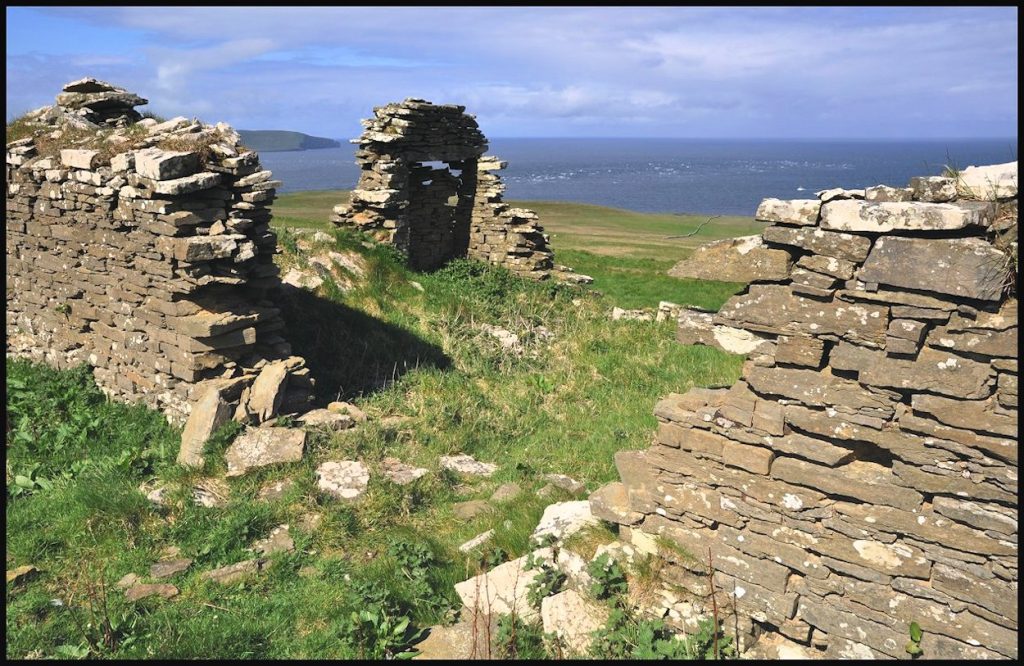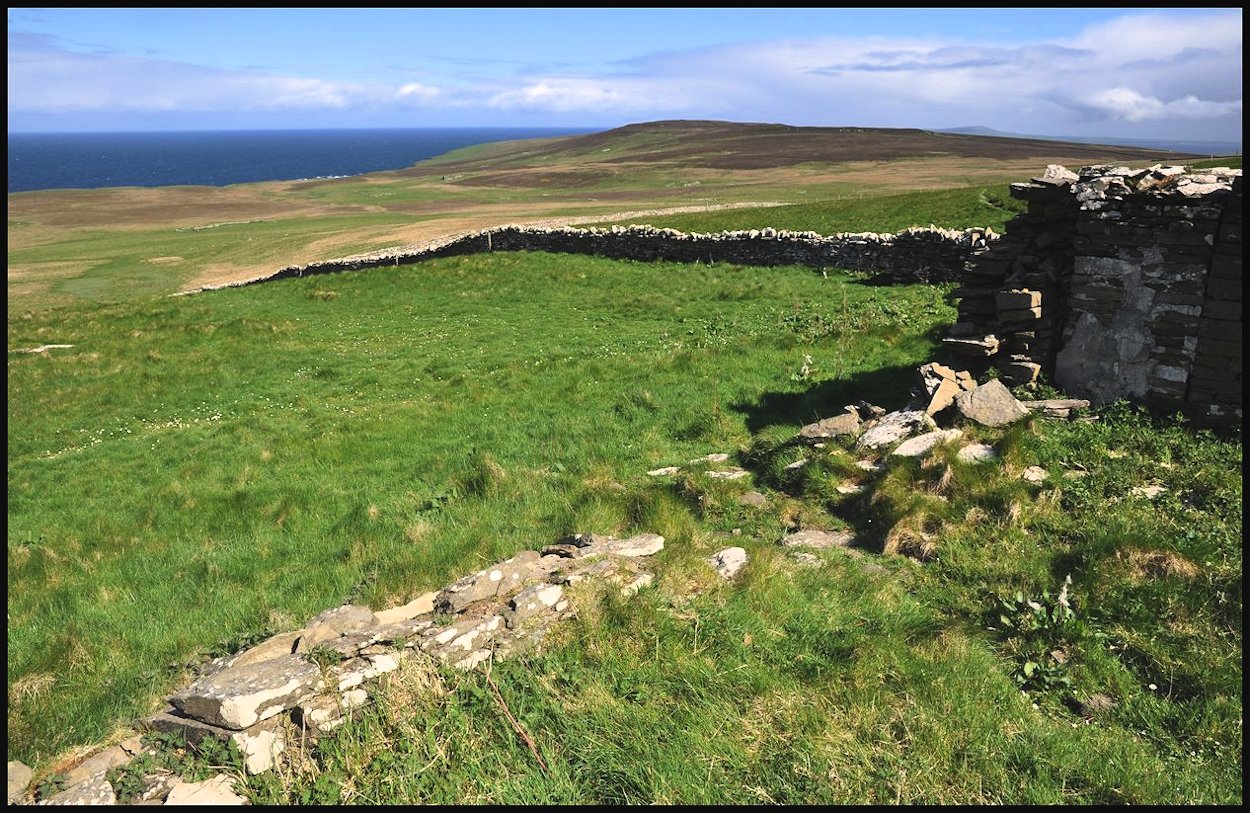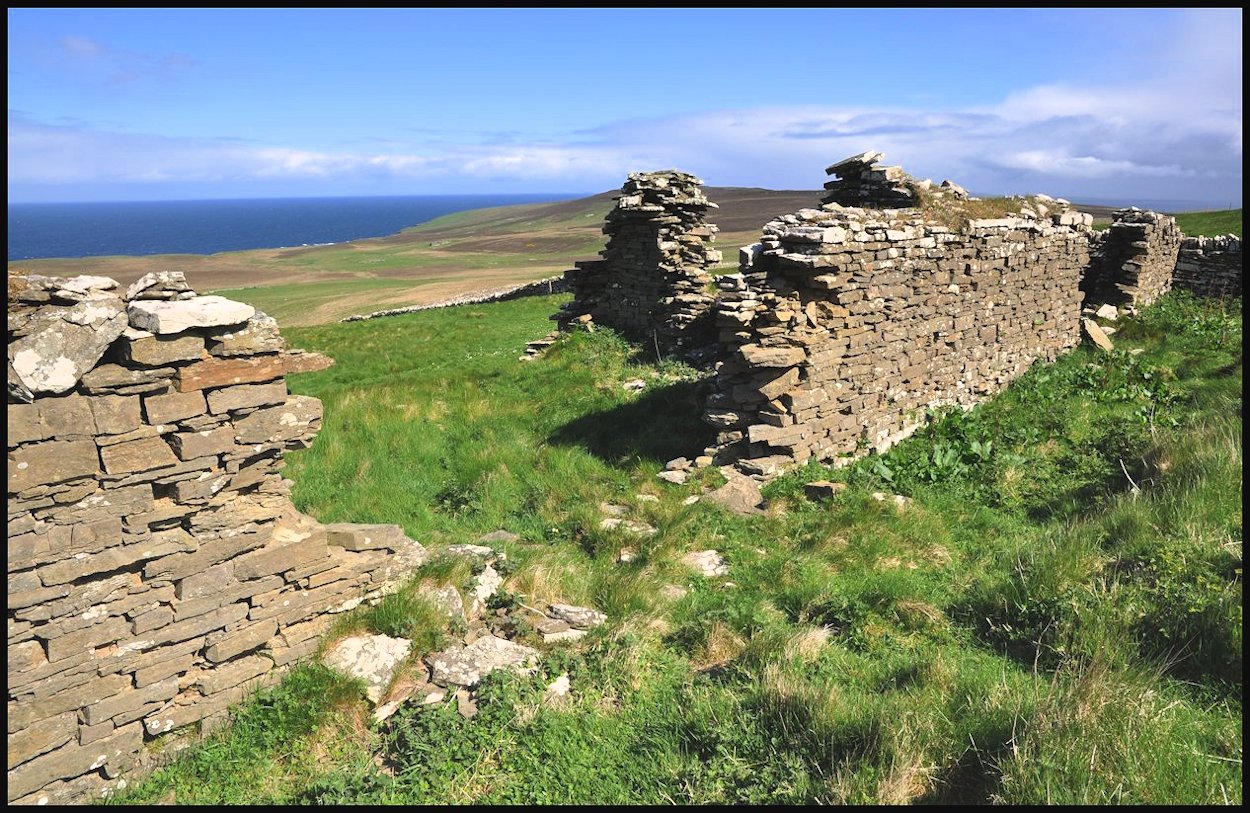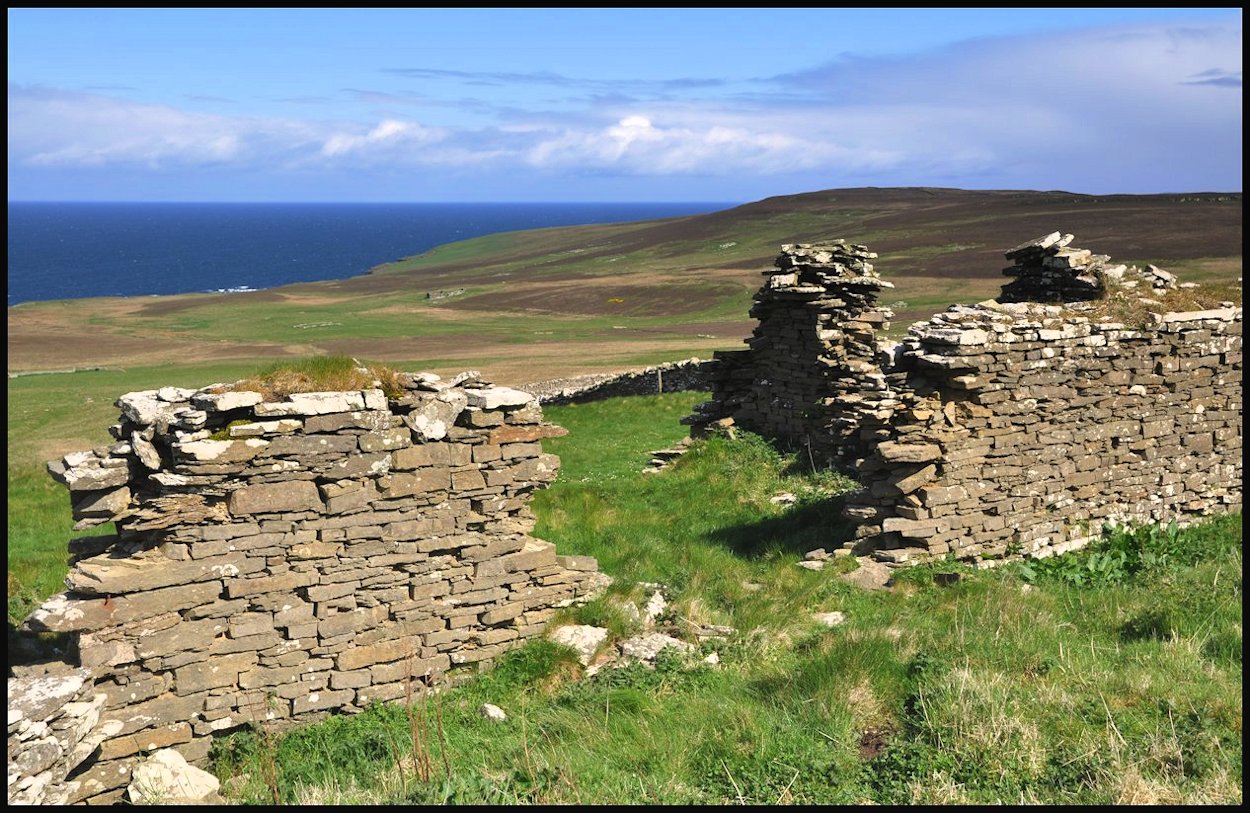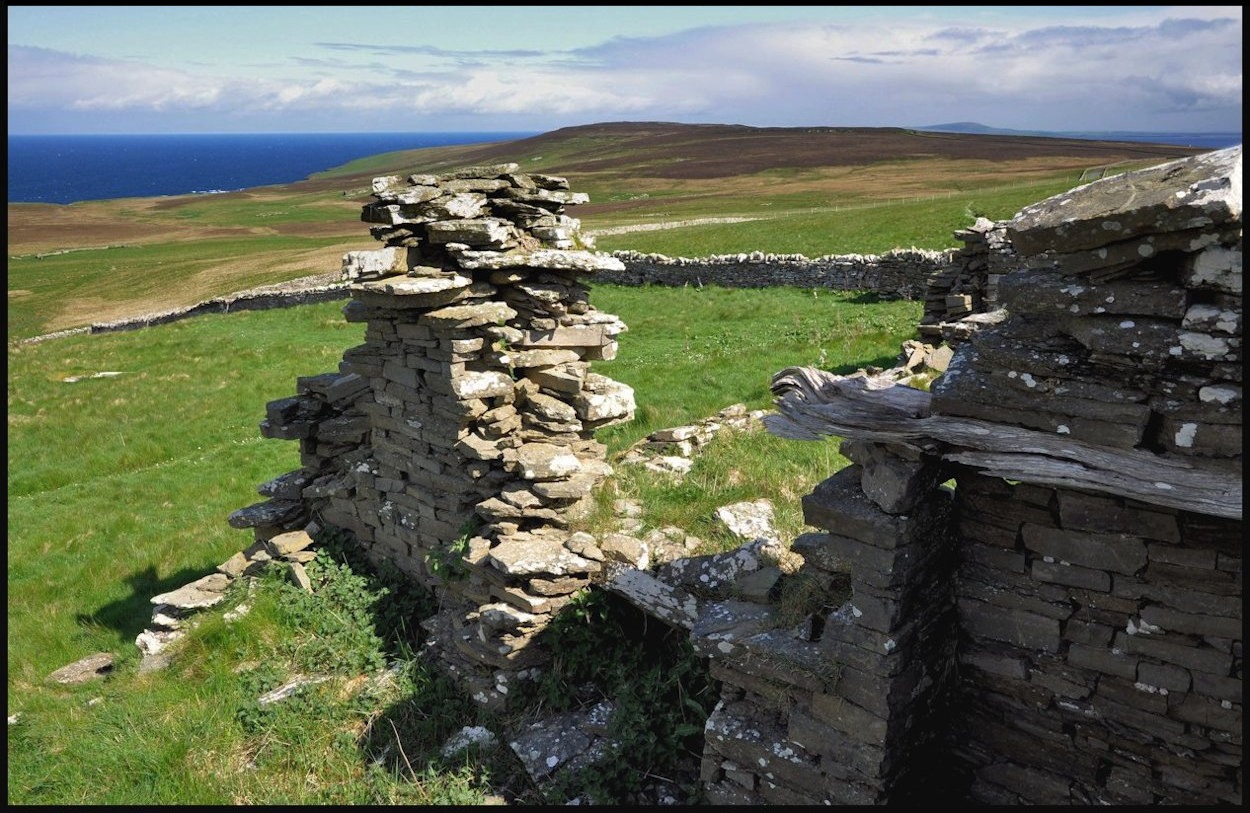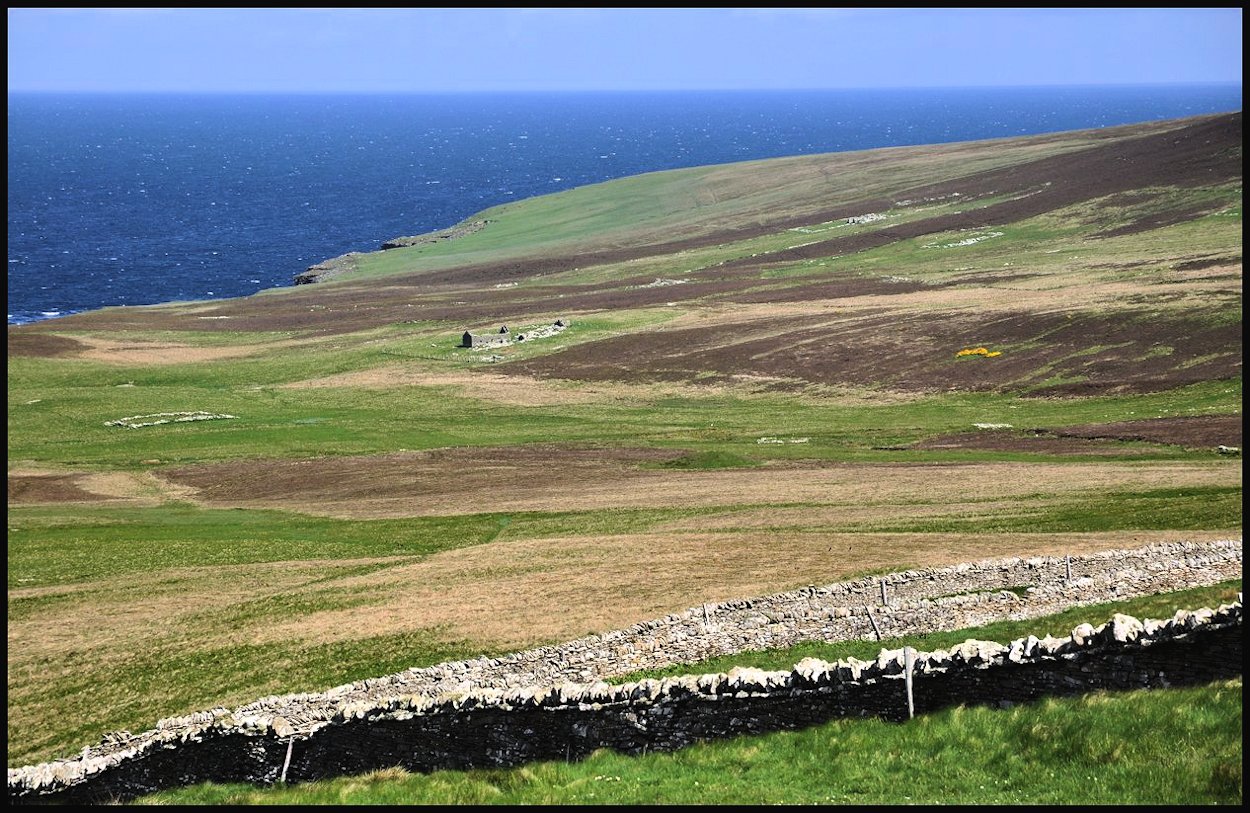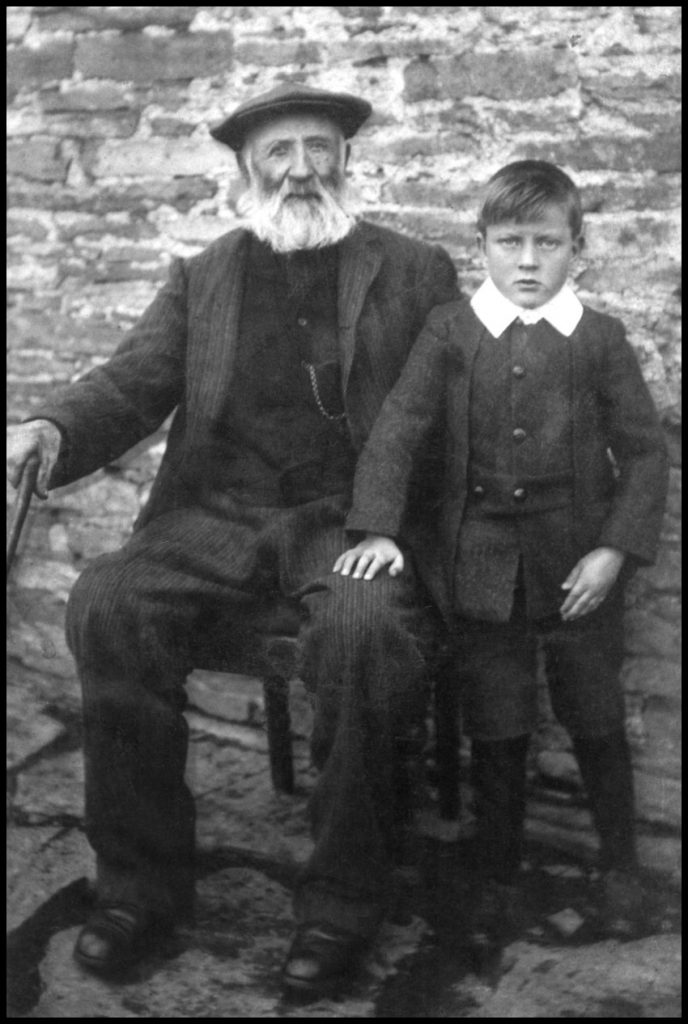The Old Parish School served the Quandale and Westness communities. At the time of the 1841 census, carried out on June 7th of that year, the population numbered 214 souls, which included 41 children between the ages of 5 and 13. The school building was centrally situated for the two communities it served, sited on high ground above the old hill dyke. Its location afforded a splendid view over Quandale and Eynhallow Sound, though because of that it took the full force of the winter weather off the sea.
The schoolroom itself measured 20×12 feet, with a 2-roomed house adjoining it. Behind lay a large walled area which was probably the schoolmaster’s kailyard. Beyond that, a 3-acre expanse of ground was surrounded by a stone dyke. Close to the house was a small byre, identifiable by its dung hole set low in one wall. For a long time it had been stipulated that a rural schoolmaster should be provided with a house, a kailyard, and enough land on which to keep a cow. The Quandale school provision appeared to correspond with those requirements.
The schoolmaster at that time, Robert Yorston, wrote to the Presbytery in 1824 complaining about his salary and scant accommodation. The Rousay minister Mr. James Paterson, was asked to investigate and to report back at the next meeting but the minutes make no mention of a report being made. The Presbytery required ministers to carry out annual inspections of the schools in their parishes and to submit reports of their findings. It appears Mr. Paterson was rather lax in these matters for it is recorded in 1832 that his neglect of his school duties brought upon him “an expression of his colleagues’ annoyance.”
In the Statistical Account of 1845 it is reported that the Rousay school-master’s salary amounted to £26 per annum and his fees to £6. There were 41 children in the parish between the ages of 6 and 15 who were unable to read, and 21 folk over the age of 15 in the same situation. The number of children in the parish, which included the islands of Rousay, Egilsay, Wyre, and Eynhallow, was between 250 and 300 so the proportion unable to read was only about 1 in 7.
This was a very high rate of literacy considering school attendance at that time was not compulsory. This level of literacy was common in Orkney and considerably higher than in most parts of Scotland. Few children stayed at school beyond the age of 13, and in the summer months attendance at school was always severely affected by the practice of keeping children at home to work on the farms, doing herding and carrying out other tasks.
Divinity student James Brotchie took charge of the school in 1832 after satisfying the Presbytery regarding his moral character and his proficiency in ‘the proper branches of education.’ After five years in the post he left to become assistant minister in Westray, and he was was succeeded by George Robson, who came from the Society School in Stenness. It is recorded that he had been elected at a meeting of the heritors and that the Presbytery ‘examined him in English, Reading and Grammar, Arithmetic, Navigation, Latin, and Greek, and having found him qualified to teach all these Branches, confirmed his appointment to the office of Parochial School-master.’ Robson, a native of Banff, came to Rousay in 1838 and a few years later married local girl Janet Murray and they had three daughters; Anne, Eliza, and Margaret. He stayed for sixteen years and was replaced by a Caithness man, Sinclair MacKay. Like his predecessor, MacKay married shortly after coming to the island, his wife being Mary Corsie from Skaill. They had three sons; John, James, and William.
The clearance of people from the main part of Quandale took place in the late 1840’s, resulting in the potential attendance of the school dropping from 41 to 33 between 1841 and 1851. In 1841 there were 41 children in the district and if a high proportion of them attended school, one wonders how they all managed to crowd into such a small classroom. The number of children dropped by half during the 1850’s when the larger holdings such as Brough and Skaill, lying nearer Westness, were absorbed into Westness Farm after the expiry of their leases. It was during that period also that those crofts which lay on the upper fringes of Quandale, such as Stourameadow and Flintersquoy, were cleared. The families remaining in the district after 1860 were mainly employed on Westness Farm.
Sinclair MacKay was still presiding over the Westside school in 1861, but by 1871 he had been transferred to a new Parish School in Frotoft, built on the high ground above Tratland.
After lying empty for a number of years the old Quandale school building became a dwelling house for Robert Logie, the shepherd looking after the Westness flocks. He was the son of John Logie and Mary Craigie of Geo, Westness, and was born on September 2nd, 1833. He married Mary Murray, daughter of Magnus and Janet Murray of Tofts, Quandale. They had a family of seven children, three boys and four girls, born between 1858 and 1871, though four of them died at an early age.
A tombstone in the Westside kirkyard records the demise of this family:
Erected in memory of
Robert Logie many years shepherd on Westness
died December 1927 aged 93 years and his wife
Mary Murray died February 1906 aged 82 years.
Their sons, Robert died April 1876 aged 19 years,
James died August 1884 aged 16 years.
Their daughters Eliza died January 1886 aged 22 years,
and Mary died February 1891 aged 29 years.
Robert Logie, with his grandson Sandy Logie c1916
[Photo courtesy of Tommy Gibson]
The last shepherd to live in the old school building was Charlie Louttit, who was killed in France in the First World War. Charles William Louttit was born in Evie on August 11th 1883. He was the son of Charles Still Louttit of Evie and Mary Ann Kirkness of Holm, and he married Mary Jemima Mainland Kirkness of Grain, Rousay, on May 17th 1906. Serving with the 1/4th Gordon Highlanders, he was killed in action during the Battle of Bapaume in France on March 25th 1918 – a fact recorded on the Evie war memorial.
The roof of Caithness slate was removed from the old school in 1921 and made use of when the new house at Bigland was built in Sourin.
[Reference was made to Robert Craigie Marwick’s From My Rousay Schoolbag for the opening paragraphs. Further information came from Tommy Gibson, and Orkney Library & Archive]
